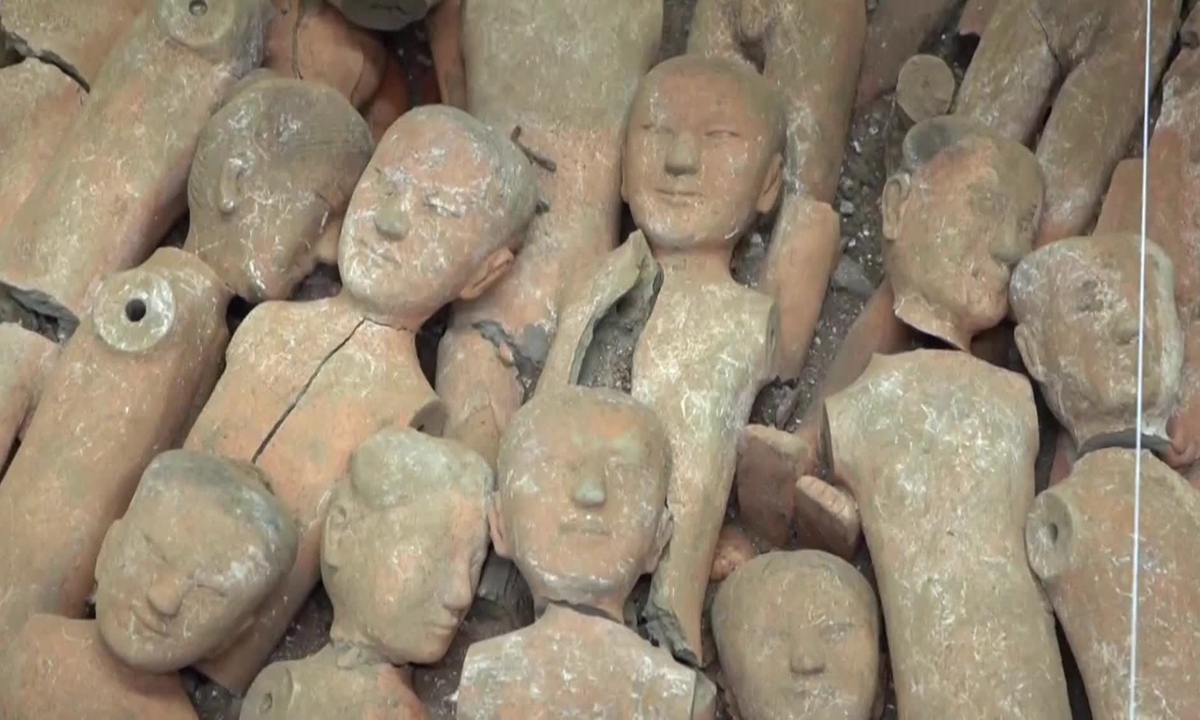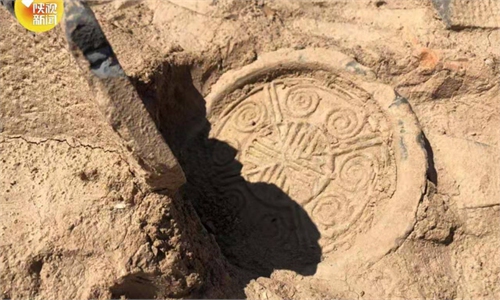Tomb of Western Han Dynasty’s third emperor dating back 2,000 years identified, after being wrongly recorded in history

Picture of pottery figurines in the tomb of the Wen Emperor, the third emperor of the Western Han Dynasty (206BC-AD25). Photo: IC
The identity of the owner of an ancient tomb near Xi'an dating back 2,000 years was finally determined to be a famous emperor, after being mistaken for decades. The tomb was found to belong to the Emperor Wen, the third emperor of the Western Han Dynasty (206BC-AD25).
This latest discovery means that the location of the tomb of the emperor who had such a significant historical role had previously been wrongly recorded for hundreds of years.
According to the introduction the National Cultural Heritage Administration sent to the Global Times on Tuesday, the tomb, previously called the Jiangcun grave, has a length of about 72 meters and is about 30 meters deep. It is located in the Baqiao district of Xi'an, Northwest China's Shaanxi Province.
More than 110 satellite pits were discovered around the tomb, where over 1,500 cultural relics such as pottery figurines, bronze seals, bronze chariots and horses as well as ironware works had been unearthed from eight of those pits, the administration said.
Emperor Wen Liu Heng was the son of Liu Bang, founder of the Western Han Dynasty, and grandfather of the dynasty's best-known Emperor Wu Liu Che, who sent envoys to Central and West Asia and explored the travel routes that were later known as the Silk Road. When governing the country, Emperor Wen aimed to rehabilitate society and people's livelihoods after years of war.
Archaeologists found that some Chinese characters were carved on the bronze seals, including "chefu" (chariot yard) and "cangyin" (seal of warehouse), demonstrating that the satellite pits around the emperor's grave were meant to represent the real government offices.
The scale, shape and structure of the grave all conform to the highest level of tombs built in the Western Han Dynasty. Moreover, Emperor Wen's wife's and mother's tombs were distributed around the grave, so experts confirmed that this one was the real tomb of the Emperor Wen.
In the mother's grave, archaeologists unearthed hundreds of gold and silver ornaments with exotic decorative styles that were speculated to have been created by ethnic groups living in the grassland regions, implying that the "central plains" of China had established communication with the grassland areas even before opening the Silk Road.
"The discovery fills in the blank areas of the evolution of the tombs of the Western Han Dynasty's emperors," Cao Long, researcher at the Shaanxi Academy of Archaeology and member of the archaeological team, told the Global Times on Tuesday.
Cao noted that the discovery can help improve the local protection of cultural relics and heritage items, and the tourism and cultural industry in the district also can benefit.
The Jiangcun grave does not have a mound, so it was difficult to tell from outside that it is an ancient tomb. The discovery of the grave was due to an auction in the US in 2002 of robbed tomb artifacts, as China Central Television reported.
Six pottery items dug out from the Jiangcun grave by tomb raiders were presented at the auction. The Chinese government resorted to diplomatic means and finally stopped the transaction.
The six items were sent back to Xi'an in 2003, and the authorities later confirmed they had been stolen from the Jiangcun grave.


